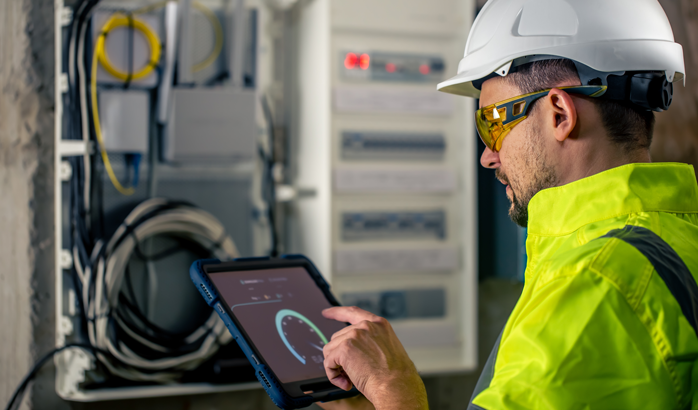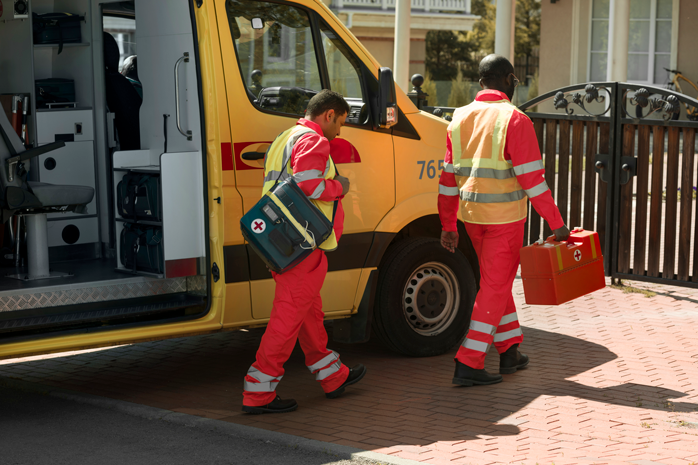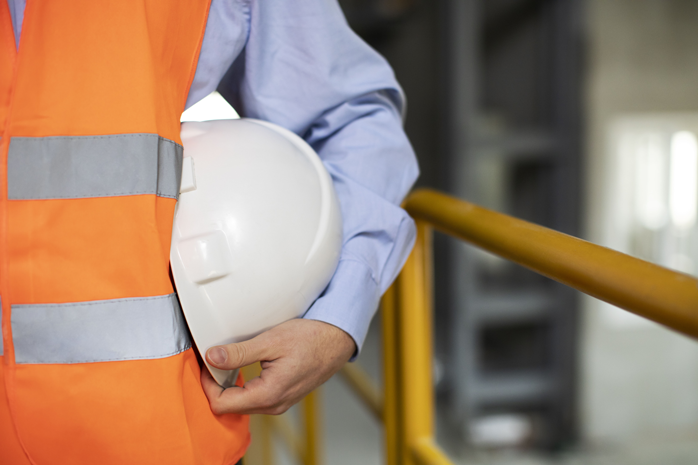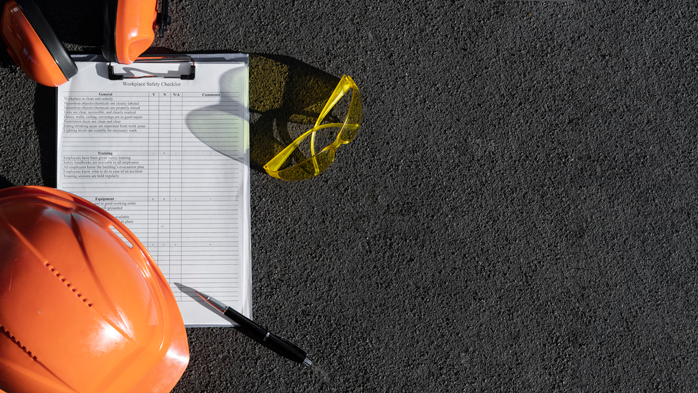How Can AI Transform Your EHS Systems into a Seamless Safety Powerhouse?
Contents:
-
The EHS Evolution: Why AI is the Missing Piece
- Laying the Groundwork for Integration
- Key Areas Where AI Amplifies EHS Systems
- Building Trust: Overcoming Resistance to AI in EHS
- From Prediction to Prevention: AI’s Role in Real-World EHS Solutions
- Seamless Integration: Best Practices for Success
-
A Look Ahead: The Future of AI-Driven EHS Systems
-
What’s Next for Safety? AI Holds the Key

In a world where workplace safety is more critical than ever, technology has become a driving force in mitigating risks and protecting workers. Environmental, Health & Safety (EHS) systems have long been the backbone of safety management in industries ranging from manufacturing to healthcare. Now, with the advent of AI-powered solutions, these systems are entering a new era that is marked by predictive insights, real-time responsiveness, and unparalleled accuracy. But how do you integrate these cutting-edge technologies into existing EHS frameworks without disrupting operations? Let’s explore the transformative potential of AI in EHS and how businesses can achieve a seamless integration. In 2021, the U.S. Bureau of Labor Statistics (BLS) reported 5,190 fatal work injuries, highlighting the urgency of proactive safety measures. AI, proven successful in finance and marketing, can revolutionize safety protocols.
The EHS Evolution: Why AI is the Missing Piece
Traditional EHS systems have been instrumental in tracking incidents, managing compliance, and training employees. However, they often rely heavily on manual inputs and reactive approaches, which can leave gaps in risk management. Enter AI-powered safety solutions, which address these shortcomings by automating processes, identifying patterns in data, and enabling proactive interventions.
Take the case of predictive maintenance in manufacturing plants. Traditional EHS systems might flag a machine for maintenance based on routine schedules, but AI analyzes usage patterns, vibration data, and environmental conditions to predict when a failure might occur. This shift from reactive to proactive safety transforms how risks are managed, reducing downtime and enhancing worker safety.
Laying the Groundwork for Integration
Integrating AI solutions into existing EHS systems isn’t about replacing what works; it’s about enhancing it. The key lies in understanding how AI and EHS can complement each other.
1. Assessing Current Systems
Start by evaluating the strengths and limitations of your current EHS framework. Are there gaps in data collection? Do incident reports take too long to generate actionable insights? Understanding these pain points will help identify where AI can deliver the most value.
2. Defining Integration Goals
Integration shouldn’t be an aimless pursuit of innovation. Define clear objectives, such as reducing incident response times, improving compliance reporting, or enhancing hazard detection. These goals will guide the implementation process and ensure alignment with organizational priorities.
3. Ensuring Data Compatibility
AI thrives on data, but its effectiveness depends on the quality and compatibility of the data it processes. Assess whether your current systems can provide the structured, clean data that AI algorithms require. If not, investing in data cleansing and integration tools will be a crucial first step.
Key Areas Where AI Amplifies EHS Systems
The potential applications of AI in EHS are vast, but some areas stand out for their transformative impact.
1. Hazard Detection and Mitigation
AI systems, like VigilantAI, excel in detecting hazards that traditional systems might overlook. For example, integrating AI with CCTV cameras enables real-time detection of unsafe behaviors, such as workers entering restricted areas without proper protective equipment. This not only prevents accidents but also reinforces a culture of safety.
2. Compliance and Reporting
Staying compliant with regulations like OSHA or GDPR can be daunting. AI simplifies this by automating data collection, generating reports, and flagging potential compliance issues before they escalate. Imagine an AI system that continuously monitors workplace noise levels and alerts managers when thresholds are exceeded, ensuring timely corrective action.
3. Incident Prediction
One of the most powerful capabilities of AI is its predictive analytics. By analyzing historical data, environmental conditions, and human behaviors, AI can identify patterns that indicate potential incidents. For example, if forklift collisions frequently occur during certain shifts, AI can recommend schedule adjustments or additional training to mitigate the risk.
Building Trust: Overcoming Resistance to AI in EHS
Introducing AI into Environmental, Health, and Safety (EHS) systems can revolutionize workplace safety, but skepticism from employees and management often creates roadblocks. Addressing these concerns with clarity and empathy is key to successful adoption.
1. Transparency in Implementation
Imagine a factory introducing AI-powered safety tools without explanation. Workers naturally grow wary, assuming the system is there to monitor them. Transparency turns this skepticism into trust. Explain how AI enhances safety by detecting risks like faulty equipment or unsafe behaviors, focusing on prevention rather than punishment.
Example: A construction company rolled out an AI system and held team discussions to demonstrate its role in spotting structural issues early. Employees appreciated the openness, which fostered confidence in the system’s purpose and value.
2. Involving Employees Early
Change often meets resistance when workers feel excluded. Engaging employees from the start builds ownership. Invite their input and show how their insights contribute to better safety outcomes.
Consider a logistics center introducing AI to monitor forklift activity. Instead of a top-down implementation, management involved workers in the pilot phase, demonstrating how the system prevented collisions. By being part of the process, employees felt their contributions were valued, making adoption smoother.
3. Providing Training and Support
Rolling out new technology without proper guidance breeds frustration. Equip employees with both the skills to use AI tools and the context to understand their benefits. Training should go beyond technical details—show how AI makes workplaces safer and highlight its tangible outcomes.
Example: An oil company introduced AI for pipeline monitoring and paired the launch with hands-on training sessions. Employees learned how to operate the system and interpret its findings, building confidence and transforming AI into a trusted tool.
Trust is built when employees see AI as a partner in safety, not a replacement or a threat. Engaging workers openly, valuing their input, and empowering them through training creates a culture where technology and human expertise work hand in hand. By fostering collaboration, businesses can ensure AI is embraced as an essential ally in protecting both people and assets.
From Prediction to Prevention: AI’s Role in Real-World EHS Solutions
1. Oil and Gas Industry
In the high-risk world of oil and gas, companies like BP are using AI to monitor pipeline integrity, detect leaks, and predict equipment failures. By integrating AI with existing EHS systems, they’ve significantly reduced environmental hazards and operational downtime.
2. Construction Sites
Construction companies are adopting AI-powered drones to monitor sites for safety compliance. These drones capture real-time images, which AI systems analyze to detect risks such as unstable scaffolding or missing protective gear. This proactive approach ensures safer working environments.
3. Healthcare Facilities
Hospitals are leveraging AI to monitor patient movement and staff behaviors. For instance, AI systems can identify when a patient is at risk of falling and alert nurses, reducing injury rates and improving care quality.
Seamless Integration: Best Practices for Success
Integrating AI with EHS systems requires careful planning and execution. Here’s how to do it right:
1. Start Small with Pilot Programs
Begin with a pilot project to test the integration on a smaller scale. This allows you to identify challenges and refine processes before scaling up.
2. Focus on Interoperability
Ensure that your AI tools can communicate seamlessly with existing EHS platforms. Interoperability is critical for creating a unified safety ecosystem.
3. Establish Clear Metrics
Define success criteria, such as reduced incident rates, improved compliance scores, or faster response times. Regularly monitor these metrics to evaluate the impact of AI integration.
A Look Ahead: The Future of AI-Driven EHS Systems
The integration of AI into EHS systems is just the beginning. As AI technologies continue to evolve, we can expect even more sophisticated solutions, such as:
- Adaptive Learning Systems: AI tools that adapt to unique workplace dynamics, providing tailored safety recommendations.
- Real-Time Language Translation: Breaking down language barriers in multinational workplaces, ensuring safety protocols are understood universally.
- Augmented Reality (AR) for Training: AI-powered AR systems that simulate emergency scenarios, allowing employees to practice responses in a controlled environment.
What’s Next for Safety? AI Holds the Key
AI-powered safety solutions like VigilantAI are redefining what’s possible in workplace safety. By seamlessly integrating with existing EHS systems, these tools not only enhance hazard detection and compliance but also foster a proactive safety culture.
For organizations ready to take their EHS systems to the next level, the message is clear: AI isn’t just a technological upgrade—it’s a commitment to protecting people and assets in a smarter, more efficient way.
Ready to explore how VigilantAI can revolutionize your safety strategy? Contact VigilantAi today to learn how we can help you integrate cutting-edge AI solutions tailored to your unique needs. Let’s build a safer, more resilient future together




